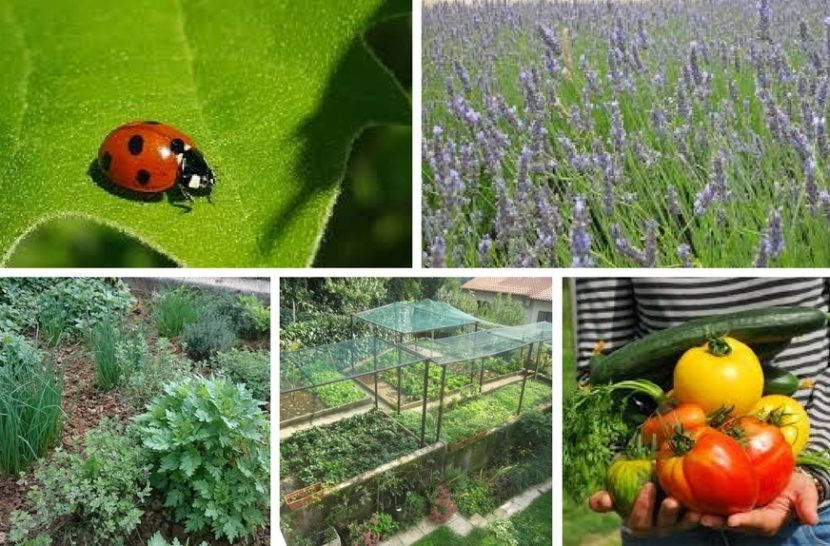To prevent is better than to heal. Take care of your garden and create an unpleasant environment for pest and disease, and make your crops safe.
Creating an unpleasant environment for pest and disease includes using fertilizers modestly (either with natural or artificial fertilizers), maintaining the proper pH of the soil and intercropping.
Intercropping
Intercropping makes the garden slightly more difficult to cultivate, as not all plants of the same vegetable are in one place, but it brings many benefits:
- Some species of vegetables and flowers repel insects or disease from their neighbors
- Many pests don’t see that well and don’t find individual crops
- Diseases don’t spread to other crops as easily
- Even crops have their friends and foes, and facilitate or hinder each other’s growth
- When combining the fast growing crops with the ones that grow slowly, we avoid having spots of bare soil
- During summer high growing crops give shadow to the low growing ones
- Legumes help crops that need extra oxygen.
Useful crops:
- Basil against flies, mosquitoes, leaf lice, moths, grey mold,
- Mint against flea beetles, ants, lice, cabbage root fly and other flies
- Lavender against lice, ants and mice
- Garlic against lice, snout beetles, mites, peronospora, thrips, potato and grey mold, snails, voles, bacteria
- Onion against peronospora, mold, lice, mites, snails
- Horseradish against Colorado beetles, monilinia, leaf lice, botrytis
- Marigolds against ground pests, fungi, lice, some types of weed (bindweed)
- Indian cress against lice, leaf beetles, ground pests, fungi, snails
- Calendula against lice, ground pests, fungi, snails, Colorado beetles
- Savory against lice
- Wormwood against rust, lice, snails, mites, ants, caterpillars
- Sage against mold and pests
- Chamomile against mold and damping-off
- Rhubarb against onion flies, carrot flies, leek moths, caterpillars and as a general repellent
- Celery against caterpillars
- Tomatoes against caterpillars, pea moth and flea beetles
- Carrots against onion flies
Some great companions for intercropping:
- Pole beans, corn, sunflowers and quash
- Basil with squash and radicchio
- Savory, thyme and sage with pole and bush beans
- Garlic with strawberries
- Chamomile, calendula, Indian cress and sage with brassica vegetables
- Marigolds, calendula, Indian cress or horseradish with potatoes
- Tomato with peas
- Carrots with leek or onion
Garden requires flowers as well, as they attract beneficial insects that eat lice, and repel some pests. However, plant mint and horseradish to pots and not directly to the garden as they become very annoying weeds as well.
When you plan your garden according to good and bad companions, you can also use the garden planner at tomappo.com for help.
Protection of crops against pests and disease
- Sow or plant when there are not pests or diseases
- Planting at the proper times for individual crops increases their immunity
- Strengthen the crops with algae extracts or dissoluted milk (1:1 with water), and with valerian tea against cold
- Cover the crops with garden fabric, curtains, fly netting etc. (according to the size of pests). Use support so the netting doesn’t lie directly over the crops.
- Use intercropping method.
- A long rotation period prevents pests to reproduce
Prevent pests from reproducing
If you notice pests in your garden, remove them:
- Colorado beetle: put an open umbrella under the crop and shake the crop
- Snails and slugs: pick them by hand or catch them with traps
- Lice: remove the first colonies by hand, the following will get eaten by beneficial insects
- Butterflies: remove their eggs by hand
There are some beneficial insects that can help as well:
- Ladybugs eat lice
- Lacewings eat lice, mites and scale insects
- Hoverflies also eat lice
- Spiders, earwigs, mantises and several other insects are beneficial as well
- Moles eat mole crickets and slugs
- Hedgehogs eat slugs, mole crickets, summer chafers, caterpillars
- Bats hunt moths, mosquitoes and flies
- Weasels, skunks and cats drive off voles
- Snakes eat voles and mice
- Sand lizards, frogs, toads and salamanders eat snails and insects
- Birds (sparrows, tits, robins, finches etc.) are very welcome as well, as they eat lice and other insects.
To attract beneficial insects to your garden, plant yarrow, roses, calendula, coriander, buckwheat, fennel, balm, chamomile, thyme, hyssop, Echinacea, white mustard and various sorts of clover. Make a shelter from leaves and branches for hedgehogs in a peaceful part of the garden, and a hole in the fence for passage. Sand lizards love rocks. Birds will come if you feed them during winter (leave some fruit on your fruit trees, plant bushes which grow berries in the winter), prepare water for them during summer and put a hatchery on a predator-safe place.

